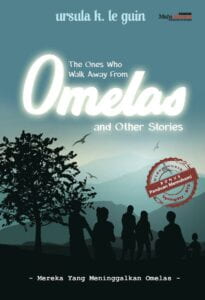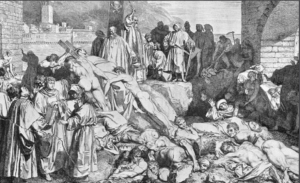The Veldt can be read as a lesson in the perils of technology, particularly when it jeopardizes the bond between parents and their children. In this fiction, George and Lydia Hadley are a married couple that resides in a Happylife Home that is fully automated and can handle all of their household chores for them. Another big part of this story is about the nursery they bought for their children. This nursery can show the conscious activity in people’s own minds in three dimensions, it was originally used to record and study children’s consciousness, but then it was abused by George’s two children and they ended up killing their parents in this place. I was impressed by some words of this fiction, and it says–One of the original uses of these nurseries was so that we could study the patterns left on the walls by the child’s mind, study at our leisure, and help the child. In this case, however, the room has become a channel toward-destructive thoughts, instead of a release away from them. In order to avoid the tragedy in the ending, I want to design a detector of violent danger awareness.
This interactive device is installed in the nursery, and it will detect the consciousness pattern on the wall because in this room the kids’ consciousness will be projected on the wall. Once the device detects that the wall pattern contains aggressive and violent elements, it will automatically stop the function of the room and report to the parents via mobile phone. And the parents are empowered to decide how long the nursery will be closed. So basically the whole system consists of the person showing emotions and consciousness first, this device detects and then makes interpretation and judgment, and once it detects the awareness of violence, it starts to operate with its stress system so that measures can be taken to prevent the occurrence of violent tragic events.

The Ones Who Walk Away From Omelas depicts an apparently harmonious, beautiful, and happy utopia-like society, but it is not really a utopia; the prosperity and beauty of this society are based on the loneliness and misery of a child. This fiction is an anti-utopian story and also a story related to society and morality. It raises some ethical questions for us to think about–what if the greatest happiness for the majority depended, not merely on a minority being unhappy, but on a minority actively being kept in a perpetual state of misery? What if that were the condition on which everyone else’s happiness and success depended? Would that be morally acceptable, or would it not, rather, strike us as morally repugnant? Although the ending of this fiction is remarkably moving with its subtle acknowledgment that there are some who refuse to give up on the idea that a better world is possible, one of the book’s most moving moments occurs just before the end when the narrator describes the gradual acceptance of the citizens of Omelas to the child’s suffering. People witnessing this child’s suffering are first shocked and outraged. But when they discover that their own happiness is based on his or her very painful experience, they begin to justify evil and start to become insensitive.

In such a circumstance, I hope that something will cause these people to stop being indifferent and once more be able to feel the sorrow and rage over this child’s suffering in order to come up with a better solution. So I want to make a feeling transmission device to correlate this boy’s feelings with people in the whole city. When this boy feels hungry, lonely, or sad, everyone will receive such emotions so that people will feel pain and thus think about how to improve the living conditions and emotions of this child.

The fiction Plague tells the city has a very susceptible virus, infected people will be gradually petrified in a very short period of time. But after they are completely petrified they are still alive, they just become a concept of time and its slow new life form. But most of the uninfected people just burn these petrified people, and this fiction discusses something more than just about the epidemic and the virus, but also about life and ethics.
The interactive device I design for this scenario is a machine which can serve the infected people to let them live in a more comfortable way before they become totally petrified. The petrified people give instructions to the robot with their limbs or eyes, and the robot confirms and helps them complete the instructions.